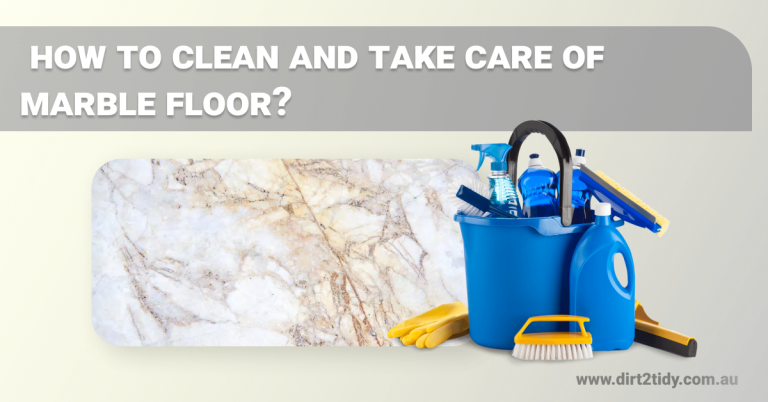Table of Contents
Introduction:
Australia’s unique climate and environment make it a hotspot for a variety of household pests. Understanding how to identify and control these pests is essential for maintaining a safe and healthy home. From tiny coastal brown ants to large, unwelcome spiders, each pest presents its own set of challenges and health risks. The warm, humid conditions found in many parts of Australia create ideal breeding grounds for these intruders, meaning homeowners need to stay vigilant year-round. Being able to quickly recognise and address household pests not only helps prevent property damage, but also protects your family from potential diseases and allergens.
Seasonal changes often influence pest activity, so it’s important to adapt your prevention strategies throughout the year. By learning how to spot the signs early and practising effective control methods, you can keep your living space comfortable and pest-free. This guide will discuss the most common Household pests in Australian homes and provide effective strategies for managing them.

Cockroaches: How to Keep Them Out of Your Home
Cockroaches are one of the most common and resilient pests in Australia. They can spread diseases and contaminate food, making them a serious health hazard. To keep cockroaches out of your home:
- Keep your kitchen clean: Wipe down counters, clean up crumbs, and store food in sealed containers.
- Remove moisture: Fix leaks and reduce humidity, as cockroaches are attracted to damp environments.
- Seal entry points: Use caulk or weatherstripping to close gaps around doors, windows, and pipes.
- Use baits and traps: Place cockroach baits or sticky traps in areas where you’ve seen activity to help control the population.
[lead-form form-id=1 title=Fill to Get Free Cleaning Checklist]
Dealing with Ants: Prevention and Treatment
Ants are attracted to food and water sources and can quickly become a nuisance in kitchens and pantries. To prevent and treat ant infestations:
- Clean up spills immediately: Even small crumbs can attract ants.
- Seal cracks and crevices: Close gaps around windows, doors, and foundations where ants can enter.
- Use ant baits: Place ant baits near trails and entry points. The ants will carry the bait back to the nest, helping to eliminate the colony.
- Keep food sealed: Store food in airtight containers and keep your kitchen clean to reduce attractants.
- Identifying the type of ant can help you tailor your approach. If you notice ants congregating in kitchens or bathrooms, especially small light brown ones, you’re likely dealing with coastal brown ants. If you spot larger ants near wooden structures, check for carpenter ants, as they can damage timber over time.
- By staying vigilant and following these strategies, you can keep ant populations under control and protect both your food and your home’s structure.
How to Control Spider Populations Indoors? – Household Pests in Australia
Australia is home to a variety of spiders, some of which can be dangerous. To control spider populations in your home:
- Reduce clutter: Spiders love hiding in piles of clothes, boxes, and other clutter. Keep your home tidy to reduce hiding spots.
- Vacuum regularly: Use a vacuum to remove spiders, webs, and egg sacs from corners, ceilings, and baseboards.
- Use essential oils: Peppermint, eucalyptus, and tea tree oils can repel spiders. Mix with water and spray in areas where spiders are common.
- Install screens: Ensure windows and doors have screens to keep spiders from entering your home.
- Seal cracks and gaps: Check and seal any cracks around doors, windows, and foundations to prevent spiders and other insects from gaining entry.
- Natural deterrents: Along with essential oils, regularly clearing away webs and using natural repellents can help minimise the presence of these eight-legged visitors.
- By combining these practical steps, you can significantly reduce the risk of unwanted spider encounters and keep your home safer for the whole family.
You may also like to read about-“How long does pest control last”
Rodent Prevention Tips for Australian Homes
Rats and mice can cause significant damage to property and pose health risks through their droppings and potential for spreading disease. To prevent rodents:
- Seal entry points: Close gaps and holes in walls, around pipes, and under doors.
- Keep food stored securely: Use airtight containers for food storage, especially in pantries.
- Remove outdoor attractants: Keep your yard clean, and remove piles of debris, firewood, or compost that could attract rodents.
- Set traps: Use traps in areas where you’ve seen rodent activity, such as basements, attics, and garages.

Managing Termites: Early Detection and Control
Termites, or “white ants,” can cause extensive structural damage if left unchecked. Early detection and control are key to preventing costly repairs:
- Schedule regular inspections: Professional termite inspections can identify signs of activity before significant damage occurs.
- Spotting the Signs of Termite Infestation
- Stay vigilant for these tell-tale indicators:
- Hollow-sounding wood: Tap on timber structures—if they sound hollow, termites may be feasting inside.
- Mud tubes: Look for thin, muddy tunnels on foundations or walls; termites use these for travel and moisture.
- Discarded wings: Piles of small, shed wings near windows and doors often signal termites have entered your home.
- Quick Recognition Tips
- Routine checks: Inspect undisturbed areas—like basements, crawlspaces, and around the home’s foundation—regularly for any signs of termite activity or other household pests.
- Pest sightings: Keep an eye on food storage areas for any unusual insect activity.
- When in doubt, call a professional: If you spot evidence of termites or feel uncertain, don’t hesitate to contact a pest control specialist for a thorough assessment.
- By staying proactive and recognising early warning signs, you can safeguard your home against costly termite damage.
- Reduce moisture: Termites are attracted to damp wood, so fix leaks and ensure proper drainage around your home.
- Remove wood contact with soil: Keep wooden structures, such as decks and fences, away from soil or mulch, which can attract termites.
- Use termite barriers: Chemical barriers and bait systems can be effective in controlling and preventing termite infestations.
How to Handle Bed Bug Infestations
Bed bugs are notoriously difficult to eliminate and can cause itchy bites and discomfort. If you suspect a bed bug infestation:
- Wash and dry bedding at high temperatures: Heat kills bed bugs and their eggs, so wash all linens, clothing, and fabrics in hot water and dry them on the highest setting.
- Vacuum thoroughly: Vacuum your mattress, bed frame, and surrounding areas to remove bed bugs and eggs. Dispose of the vacuum bag immediately.
- Use bed bug-proof covers: Encase your mattress and box spring in bed bug-proof covers to prevent bugs from escaping or entering.
- Seek professional help: Bed bugs are challenging to eradicate, so consider hiring a pest control professional for treatment.
Quick Recognition Tips
- Look for small, rust-coloured stains on bedding or mattresses, which may indicate bed bug excrement.
- Check for tiny, pale-yellow eggs and shed skins near mattress seams or in cracks and crevices.
- Bed bug bites often appear in clusters or lines on exposed skin, especially after sleeping.
When to Call a Professional
If home remedies and cleaning efforts don’t resolve the issue, or if the infestation keeps returning, it’s best to contact a pest control specialist. Professional exterminators have access to specialised treatments and equipment to ensure that bed bugs are thoroughly eliminated.
Prompt action is key—addressing a bed bug problem early can prevent it from spreading throughout your home and causing further discomfort.

Controlling Mosquitoes and Flies
Mosquitoes and flies are common pests in Australia, particularly in warmer months. To control them:
- Remove standing water: Mosquitoes breed in stagnant water, so eliminate any sources such as bird baths, gutters, or plant saucers.
- Use screens: Install screens on windows and doors to keep mosquitoes and flies out.
- Use repellents: Apply insect repellent to exposed skin and use citronella candles or coils outdoors.
- Keep food covered: Flies are attracted to food, so cover dishes and clean up promptly after meals.
How to Keep Your Home Pest Free Year Round
Maintaining a pest-free home requires ongoing effort and attention. Here are some tips to keep pests at bay year-round:
- Regularly inspect your home: Check for signs of pests or entry points and address them immediately.
- Maintain cleanliness: Keep your home clean, especially in areas where food is prepared or stored.
- Store food properly: Use sealed containers for food storage and dispose of waste regularly.
- Manage moisture: Fix leaks and use dehumidifiers to reduce humidity, making your home less attractive to pests.
- Schedule professional inspections: Regular inspections by a pest control professional can catch issues early and prevent infestations.






